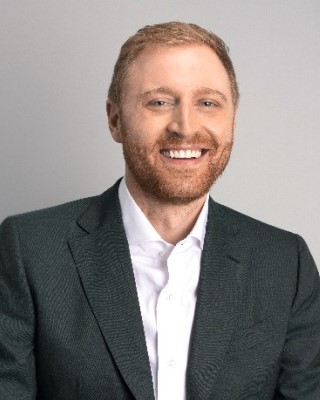Creating a More Resilient Energy Future

Nik Simonson
Managing Consultant, Disaster Recovery Services
When disasters strike — tornadoes, hurricanes, earthquakes, wildfires, cyberattacks — they can inflict serious damage to critical energy infrastructure, impacting tens of thousands of people. In the worst cases, millions can be without power for days or weeks, putting lives at risk.
That’s when schools, hospitals, municipalities and local government agencies in affected communities need experts like Nikolas Simonson. In his work with Disaster Recovery Services, Nik helps local governments and energy-oriented entities — including power utilities and cooperatives — develop disaster-specific recovery plans. He also assists them in incorporating resilience into their energy systems to prepare for future calamities.
“Everyone recognizes that no matter how well you plan, disasters are going to happen — especially now, with climate change becoming a big factor,” Nik says. “Our job is to help local risk managers and energy industry leaders be strategically prepared for the new normal. I think my UW degree has really helped me understand the urgency of becoming more solution-oriented as we navigate the disaster space.”
Here, the 2021 graduate of the UW Master of Science in Civil Engineering: Energy Infrastructure program talks about the future of energy infrastructure and how earning this degree strengthened his knowledge of the field.
How did you find your way into this field?
My undergraduate degree was in environmental studies and community and environmental sociology. After undergrad, I started working in local government on watershed management issues, then moved into working as an environmental project manager on state transportation projects.
When Hurricane Harvey hit in 2017, I had the chance to work in Texas as a technical assistance contractor supporting the government response managed by FEMA. I was tasked with managing local public assistance plans and directing federal funds to affected communities. That’s how I became interested in building resilient communities and doing pre-disaster planning and mitigation within the energy infrastructure sector.
Why did you decide to go back to school and earn your master’s degree?
Growing up in Wisconsin, I always loved being outdoors in the Northwoods. However, it never occurred to me to translate my passion for environmental stewardship into a profession. As my career path led to me to disaster recovery work, it turns out the energy field was a natural fit for me, particularly when you think about how disasters like wildfires and major storms are impacting the interplay between public energy agencies and disaster-preparedness planning.
So, I started looking at graduate programs that specialized in energy infrastructure. I knew this would allow me to get more practical engineering experience as well as more knowledge of distributed renewable power systems and net-zero energy projects. That’s what eventually led me to the University of Washington.
How did the UW program fit in with your work schedule?
The program was online and very flexible. My work schedule has always been a bit unpredictable — sometimes I would work 40 hours a week, sometimes I would work 60 or more. The UW program allowed me to take anywhere from one to three classes at a time while working full time. I could even attend class while traveling out of the country. The COVID-19 pandemic was an adjustment for all of us, but the program also lends itself well to the new remote and hybrid working environment.
What courses did you find particularly helpful for building your knowledge?
I found the energy utility and environmental regulation course work quite engaging. I also really enjoyed the additional training in Bluebeam, grid integration and utility systems construction. There was a heavier technical focus in many of the program courses, which differed from the environmental sciences classes I had as an undergrad.
I also found the courses on design and construction law and Leadership in Energy and Environmental Design (LEED) very applicable to what I’m doing now. Many of my clients are forward-thinking as they plan for rebuilding their facilities post-disaster, prioritizing things like sustainable building design and energy resilience.
How does this UW program cover the breadth and depth of the energy infrastructure field?
The program is broad enough to provide a solid foundation and wide coverage of this diverse field, but it also offers the opportunity to specialize in an area of interest. For example, the curriculum was really valuable in helping me explore issues related to infrastructure resiliency.
Whether you are interested in the physical aspects of infrastructure — design, engineering, construction — or you want to pursue public health or public policy, there are a lot of different paths you could take in this field following graduation.
I also think the program can be helpful to those already working in the energy sector. Maybe you currently work in wind energy or solar, but you think you might want to serve on a local or state energy commission someday; the program can help you prepare for that through course material on how federal agencies regulate utilities.
Why is energy-systems resilience a good field to go into now?
There is a huge need for greater climate resilience across energy systems in the United States. This is not a new problem. Similar to our nation’s aging roads, bridges and tunnels, U.S. energy infrastructure is also fragile. We are seeing disasters occur with greater frequency and in new locations, and the magnitude of the losses is also growing. I think the efforts to build up our energy-systems resilience offer excellent career advancement potential.
Whether you’re interested in improving the efficiency and reliability of power generation, regulating transmission capacity or expanding distribution assets — to name just a few — there are opportunities everywhere. And there is more grant funding available today than ever before to support these kinds of hazard mitigation measures. Planning for future disasters is absolutely essential to creating a more resilient energy future for all of us.
— Interview by David Hirning (April 2024)